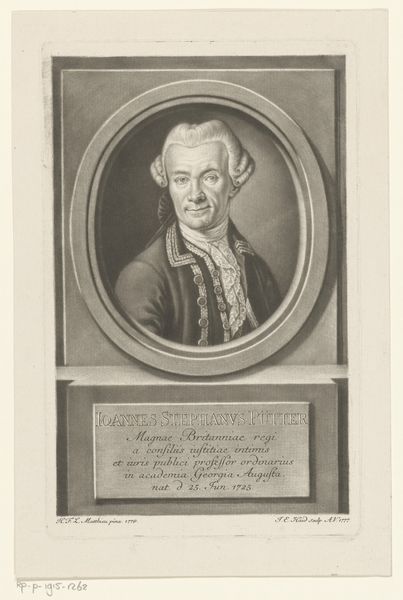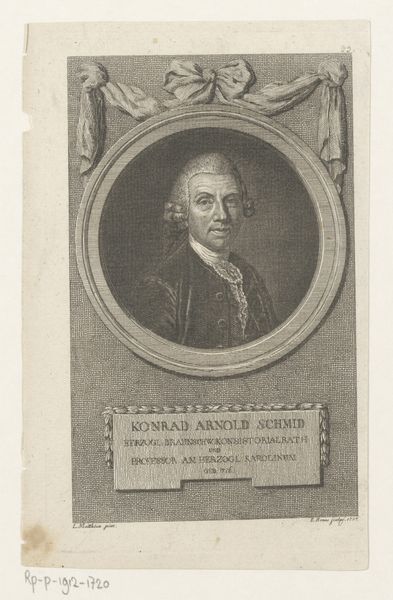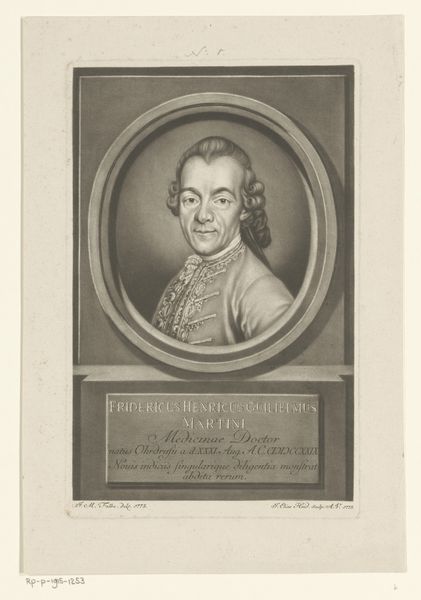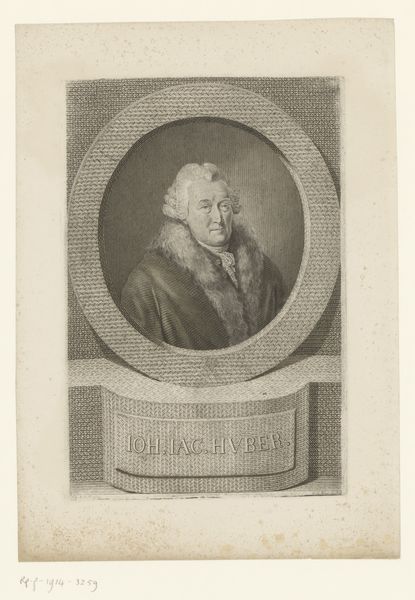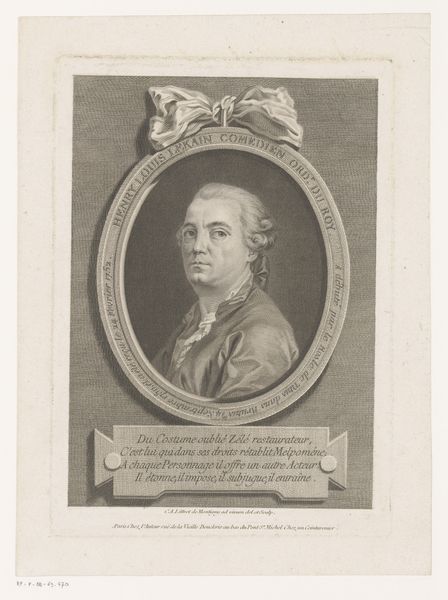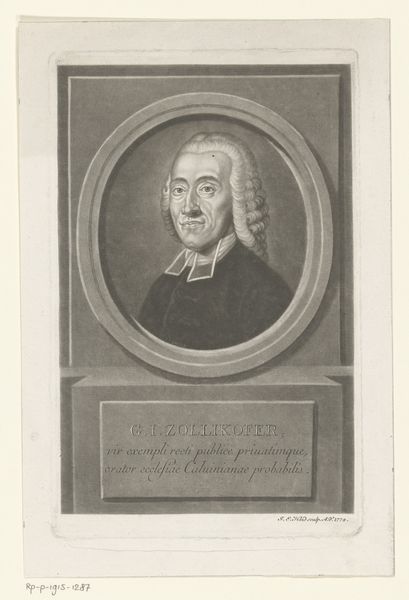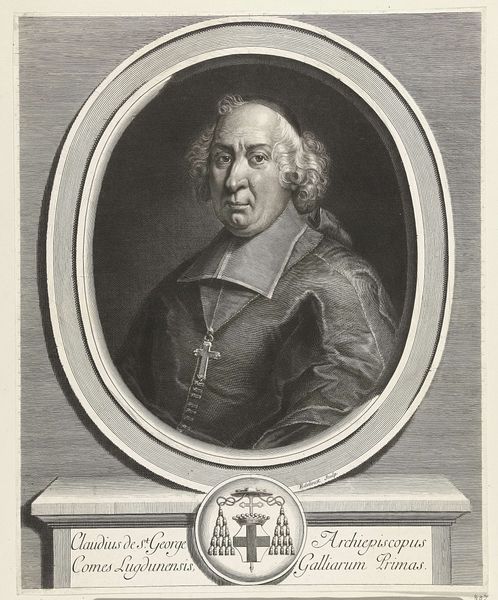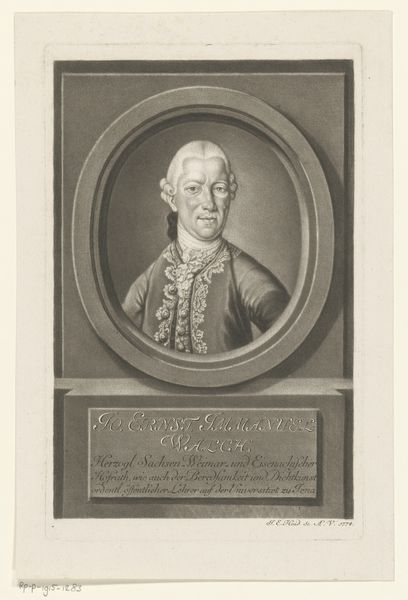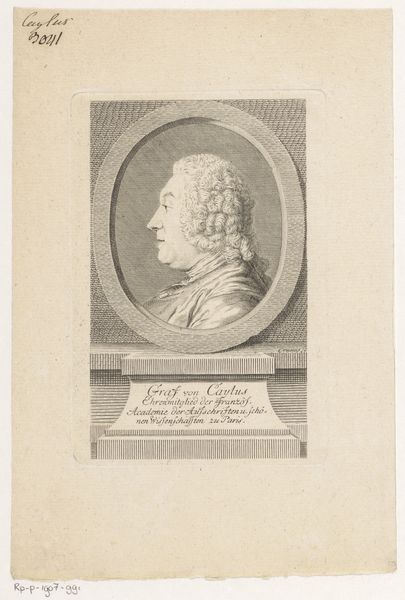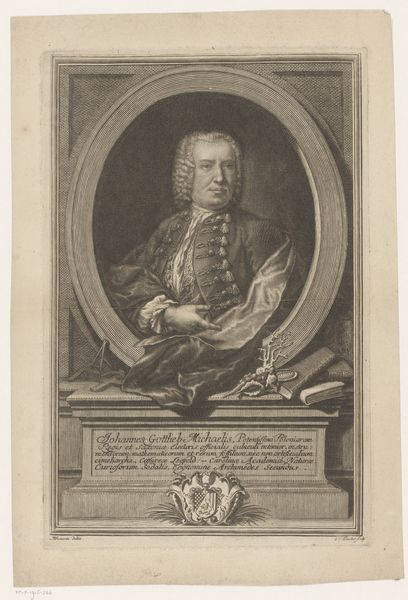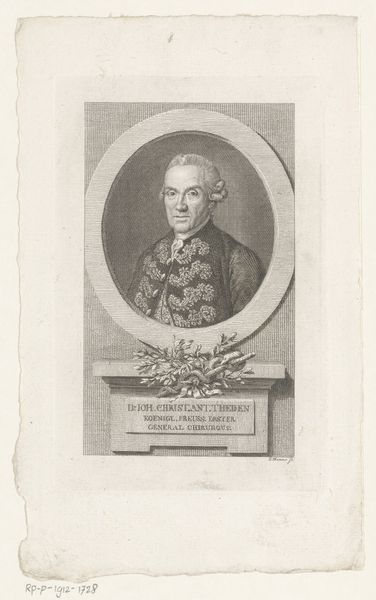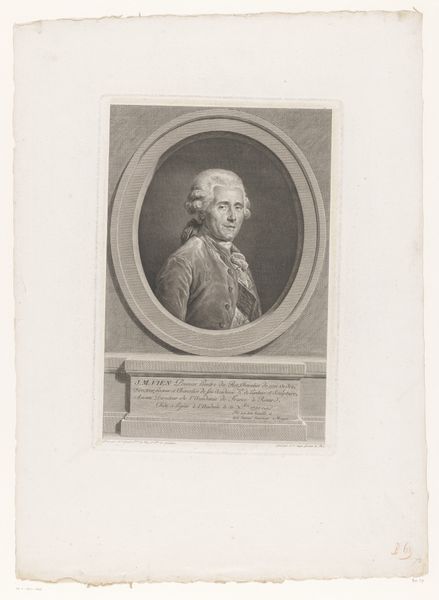
Dimensions: height 221 mm, width 140 mm
Copyright: Rijks Museum: Open Domain
Curator: Before us is the “Portret van Johann Caspar Füssli,” an engraving crafted by Johann Elias Haid in 1778. It’s held at the Rijksmuseum. The print captures Füssli, a Swiss painter and writer. Editor: My immediate impression is one of somber respectability. The subject is framed within an oval, a formal device, but the visible marks and imperfections on his face convey a lived experience. There’s an interesting tension between idealization and realism. Curator: Indeed. The oval format speaks to Neoclassical influences, a visual shorthand for authority and permanence that evokes ancient coinage and imperial portraiture, placing the sitter within a lineage of celebrated figures. Editor: The inclusion of text naming him as both a 'Pictor' and 'Scriptor', places an emphasis on Füssli’s multifaceted contributions. We understand the value society placed on male intellect during this period and it really speaks to ideas about masculinity. I'm curious about the implied audience – who was meant to possess or view this portrait? Curator: Good question. Prints such as these served multiple functions. They circulated widely, spreading the sitter's fame and achievements beyond a limited sphere, contributing to the making of a cultural hero, solidifying a specific visual idea of Füssli for a widespread audience, contributing to cultural memory. Editor: The work shows elements of the Baroque in its ornate framing and shading, even as it attempts to embrace Neoclassical ideals of clarity. It highlights the era’s shift towards rationality while holding onto historical grandeur and artistry. I wonder how Füssli's political convictions shaped his artwork. Curator: Undoubtedly, there were complex interactions at play. Considering print as a disseminator of visual thought helps clarify cultural memory: who we choose to remember, how we memorialize them visually, and the beliefs inherent to the society doing the remembering. Editor: This image encapsulates the complexities inherent in societal representation during the late 18th century, asking us to investigate the underlying structures of power, politics, gender and the making of legacies. Curator: The dialogue it inspires about legacy is valuable, prompting us to consider how symbolic language molds public figures within the broader theatre of history.
Comments
No comments
Be the first to comment and join the conversation on the ultimate creative platform.
